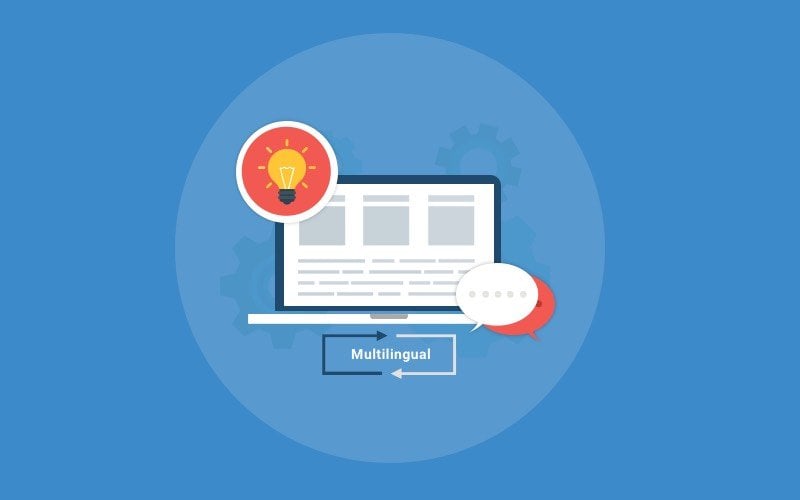
Introduce a Multilingual Knowledge base that speaks a language that your customer does. In this blog post, we discuss about a multilingual knowledge base and how it can help your business.
What Is a Multilingual Knowledge Base?
A multilingual knowledge base can be defined as a repository that allows you to organize and manage support centric pages in different languages. Using a cutting-edge tool such as ProProfs Knowledge Base, you can easily translate the site interface text to more than 15 widely spoken
languages such as Spanish, French, Dutch, Chinese and more.
Benefits Cut Down Support Costs
What’s the purpose of having a knowledge base? To assist customers find a solution on their own with minimal intervention from customer support. Let’s paint a picture to help you understand what happens with and without a multilingual knowledge base:
Case 1: You Don’t Have a Multilingual Knowledge Base
Every visitor that lands on your website has questions about products and services to bolster their buying decisions. When multilingual users can’t find answers in their native language, they either drift away to your competition or contact customer support through emails, voice calls or live chat. Just imagine, how many precious support hours are going down the drain only because your knowledge base doesn’t support multiple languages.
Your agents may have to answer the same questions over and over, that might be already on your existing knowledge base; only in English. In short, your purpose of supporting the customers is defeated. Additionally, it also leads to higher support costs as you would require more agents to support the questions that your knowledge base isn’t supporting. Plus, your agents would also feel frustrated, burned out and feel like giving up.
Case 2: You Have a Multilingual Knowledge Base
Users can now view resources on your webpage in their preferred language that includes features, pricing and other sales or support related information. Your customer support will now receive fewer queries as a multilingual knowledge base can answer most of the customer concerns without requiring external support. Your customers will think highly of your business that would definitely reflect in your sales numbers. Apart from that, your customer support will be blessed with enough breathing space that can be effectively planned to improve the quality of support or do more meaningful work.
Expand Your Horizons
If you limit your knowledge base to one language, you are preparing for failure. Most businesses naturally presume English to be the universal language for crafting their knowledge base pages, which is a rookie mistake. Your customers can be located elsewhere on the globe and it’s not necessary that each one of them is versed with English. In fact, reports on Babble Magazine and Listverse suggest that English is no more the most widely spoken language in the world.
To appeal to a wide customer base, it’s time to move on from English. Analyze google analytics data to learn what countries are sending the most visitors to your business, other than English speaking nations. After that, you can prioritize and make an informed decision about what language you need to start with.
Get More Customers
Knowing a language is one thing, however, being familiar is another. As a business owner, you are most likely to come across customers who are comfortable speaking English, but aren’t comfortable consuming online content in that language. For instance, you might understand English, Mandarin, Arabic, Spanish and Portuguese; but may still prefer consuming online resources in Spanish. Therefore, you must ensure that your knowledge base isn’t alienating customers. If your knowledge base speaks in a language that your customers want, they can easily relate to your business and eventually become a loyal customer.
Centralized and Standardized Management
Suppose your knowledge base is having a million pages to support customer concerns, that too in one language. When you plan to introduce all these information pieces in multiple languages, the amount of data generated would be staggering, good enough to send shivers down the spine. However, ProProfs Knowledge Base can save this frustration as you can manage all pages under one hood without having a hair-tearing experience while searching for information bits and pieces.
Using ProProfs Knowledge Base for multilingual support; not only you can change site interface text in over 15 languages; but also manage them with ease. Let’s understand with an example:
You can set up your preferred language (Primary Language) depending on the customer region and then, provide them an option to access the knowledge base in their native tongue, referred as the secondary language. For instance,
You can set up the primary language as “Spanish”, so the base URL for the KB page displays interface text in Spanish and then, you can link other site pages in different languages from a dropdown that users can select as per their preferences.

So, greatlife.helpdocsonline.com will be displayed in Spanish to the user and you can add modified versions of the base URL to display KB pages written in a different language other than the primary language.
greatlife.helpdocsonline.com/S: Spanish
greatlife.helpdocsonline.com/D: Dutch
As multilingual pages will be available on the fingertips, your customer support can also assist customers opting for chat support. All they need to do is drop the relevant page link and the job is done.
Let Your Business Touch the Globe
Creating a multilingual knowledge base can create a landslide impact on the way your users perceive your business. Not only it enhances brand reputation, but it also brings a new rush of customers through word of mouth promotion. But, you need to exercise caution when you go multilingual with your knowledge base. First, Plan the rollout in phases. If you try to convert all pages in multiple languages at a time, it’s a perfect recipe for disaster. To get started, you can hire temporary or remote multilingual staff to support the case. Perform a lot of testing when rolling out to see the impact on user engagement and identify the pages that demand immediate conversion or the ones that are critical for your business sales and support. This way, you can ensure a smooth transition to a multilingual knowledge resource without facing issues such as language errors or frustration.
Do you want a free Knowledge Base?
We have the #1 Online Knowledge Base Software for instant self-help







